Ombre Houseplants are the latest trend and if you want the best examples in your room, then this is a list you surely need to check out!
Say hello to Ombre Houseplants, the trending interior must-haves that are taking the plant world by storm! From their captivating gradient leaves to the subtle play of light and shade, these extraordinary plants promise to transform any space into a botanical wonderland.
Seasonal Houseplants that You Must Not Miss Growing
What Are Ombre Plants
Ombre Houseplants are unique in the plant world due to their gradual transition of color, usually on their leaves or blooms. The term “ombre” is derived from the French word for “shadow,” and in design and fashion, it refers to the blending of one color hue into another, usually moving from light to dark. I
In the context of plants, ombre refers to a similar visual phenomenon where the color of the foliage or flowers subtly changes, offering a mesmerizing display of natural gradients.
Ombre plants often attract attention for their visual uniqueness and aesthetic appeal. Due to their unusual color patterns, they are often seen as symbols of transformation and change, mirroring the fluidity of life.
Their gradient hues can also symbolize harmony and balance, as the colors seamlessly transition without stark contrasts.
Foliage Based Ombre Houseplants
1. Calathea
Botanical Name: Calathea makoyana
Also known as Peacock Plant, Calathea Makoyana displays a mesmerizing ombre effect with its feather-like green leaves gradually shading to a lighter hue. The foliage features intriguing patterns that add a unique decorative element to any indoor setting.
Have a look at the most beautiful Calathea varieties here
2. Prayer Plant
Botanical Name: Maranta leuconeura
Famous for its nightly leaf movement, the Prayer Plant offers striking ombre hues. Its leaves typically feature green tones that subtly darken at the edges, giving it a sophisticated gradient look.
3. Dragon Tree
Botanical Name: Dracaena marginata
Also known as the Dragon Tree, the Dracaena Marginata showcases long, thin leaves with red edges. Its green foliage tends to transition into darker shades, providing a natural ombre effect that elevates its aesthetic appeal.
4. Chinese Evergreen
Botanical Name: Aglaonema commutatum
A popular choice among Ombre houseplants, the Chinese Evergreen features leaves with varying shades of green that form a smooth ombre transition. Its resilience and stunning appearance make it a go-to option for both beginners and enthusiasts.
Check out our article on the best Aglaonema varieties here
5. Nerve Plant
Botanical Name: Fittonia albivenis
Commonly referred to as the Nerve Plant, Fittonia albivenis is characterized by its netted pattern of pink or white against a dark-to-light green backdrop. The contrast creates an ombre effect, adding a lively burst of color to any space.
6. Autumn Fern
Botanical Name: Dryopteris erythrosora
The Autumn Fern are outdoor Ombre houseplants celebrated for their unique color transitions. The fronds change from a vibrant orange to a darker green as they mature, exemplifying the ombre trend in the plant world.
7. Wizard Coleus
Botanical Name: Coleus ‘Wizard’
A popular choice for both indoor and outdoor gardening, the Coleus ‘Wizard’ is known for its variegated foliage. Its leaves typically feature a vivid mix of colors that blend into one another, creating an eye-catching ombre effect.
Do not miss these amazing tricolor houseplants here
Flower-Based Ombre Houseplants
8. Moth Orchid
Botanical Name: Phalaenopsis amabilis
It displays a gradient of colors from the center of its flowers outward, creating a natural ombre effect. The central core often starts with a deep hue that fades into lighter shades, making these a breathtaking Ombre houseplants focal point.
9. Painter’s Palette
Botanical Name: Anthurium
Also called the Flamingo Flower, Anthurium Andraeanum captivates with its glossy, heart-shaped blooms. The vibrant red fades to a softer shade along the edges, manifesting an understated ombre charm that adds tropical flair to your space.
10. Apple Blossom Amaryllis
Botanical Name: Hippeastrum ‘Apple Blossom’
The Amaryllis ‘Apple Blossom’ offers striking blossoms that transform from a strong pink at the core to softer shades at the petal tips. This gradient creates an ombre effect that brings elegance and aesthetic appeal to any room.
Growing Amaryllis Indoors | How to Grow Amaryllis in Pots
11. Cajun’s Flamboyant Mistress
Botanical Name: Streptocarpus ‘Cajun’s Flamboyant Mistress’
This unique African Violet variety showcases leaves that are a brilliant mix of dark and light green and flowers that transition from deep purple to almost white at the edges. This characteristic makes it standout from all indoor Ombre houseplants.
How to Force African Violets to Bloom Better and Fuller
12. Hibiscus
Botanical Name: Hibiscus rosa-sinensis
It features large, vivid flowers that often display a color gradient from the center outwards. This gradient or ombre effect enhances its exotic allure.
13. Christmas Cactus
Botanical Name: Schlumbergera bridgesii
Known for its holiday blooms, the Christmas Cactus has segmented leaves that exhibit subtle shades of green, with darker hues along the edges transitioning into lighter ones. This offers a subtle ombre effect that adds depth to its appearance.
14. Lipstick Plant
Botanical Name: Aeschynanthus radicans
Commonly known as the Lipstick Plant, these Ombre houseplants produce tubular flowers with an ombre tone. The red-orange color darkens as it nears the tips, adding a gradient quality that complements its trailing vines.
23 Different Types of Lipstick Plant Varieties
15. Florist’s Cyclamen
Botanical Name: Cyclamen persicum
This winter-blooming plant is well-known for its heart-shaped leaves and upturned flowers. The blossoms typically exhibit an ombre pattern, transitioning from a darker shade at the base to lighter hues at the petal tips.
Cacti and Succulents Ombre Houseplants
16. Rainbow Echeveria
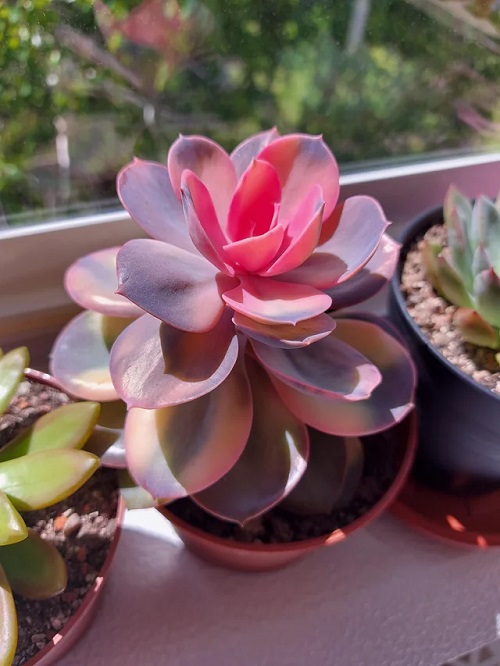
Botanical Name: Echeveria ‘Rainbow’
This striking succulent is well-known for its multi-colored leaves that display an ombre transition from green to pink to purple. The rosette shape accentuates the gradient, making it a vibrant addition to any collection.
17. Pearl of Nurnberg
Botanical Name: Echeveria ‘Perle von Nürnberg’
One of the most popular Ombre houseplants, the ‘Perle von Nürnberg’ showcases a mesmerizing ombre effect with its lavender-gray leaves transitioning to pinkish edges. The contrast creates a distinct and elegant aesthetic.
Best Echeveria Types | Echeveria Succulent Varieties
18. Beautiful Graptopetalum
Botanical Name: Graptopetalum ‘Superbum’
This unique succulent features rosettes of fleshy leaves that display a gradient of colors from blue-gray to pinkish-purple, particularly when exposed to full sun. The ombre effect adds complexity and visual interest to this plant.
Here are the best succulents that look like roses
19. Red Pagoda
Botanical Name: Crassula capitella ‘Campfire’
Living up to Ombre houseplants, this one exhibits leaves that transition from green to fiery red when stressed, creating a dramatic ombre effect. The color gradient makes it an eye-catching addition to succulent arrangements.
20. Gollum Jade Plant
Botanical Name: Crassula ovata ‘Gollum’
This jade plant variant has curled leaves that transition from dark green at the base to lighter shades towards the tips. The subtle ombre quality adds an element of depth to this otherwise straightforward plant.
21. Paddle Plant

Botanical Name: Kalanchoe luciae ‘Flapjack’
Also known as the Paddle Plant, this succulent boasts large, fleshy leaves that display an ombre effect when stressed, transitioning from green to a stunning red or orange. The gradient adds to its architectural appeal.
How to Grow Flowering Kalanchoe Indoors | Kalanchoe blossfeldiana Care
22. Firestorm Sedum Plant
Botanical Name: Sedum adolphii ‘Firestorm’
Characterized by its golden-yellow leaves that darken to red at the tips, the ‘Firestorm’ variety of Sedum adolphii presents a vivid ombre effect. This color transition intensifies with increased light exposure.
23. Christmas Aloe
Botanical Name: Aloe ‘Christmas Carol’
This small Aloe hybrid features green leaves adorned with red spikes. A gradual ombre effect occurs as the leaves go from deep green at the base to a lighter shade, tipped with vibrant red, giving it a festive appearance.
Pro Tips on How to Get Aloe Vera To Flower
24. Zebra Haworthia
Botanical Name: Haworthia attenuata ‘Zebra Plant’
Known for its striking white stripes against a backdrop of dark green, the Zebra Plant exhibits a subtle effect as the green base of each leaf gradually lightens toward the tips. The pattern adds to its intriguing look, earning it a place in the best Ombre houseplants.


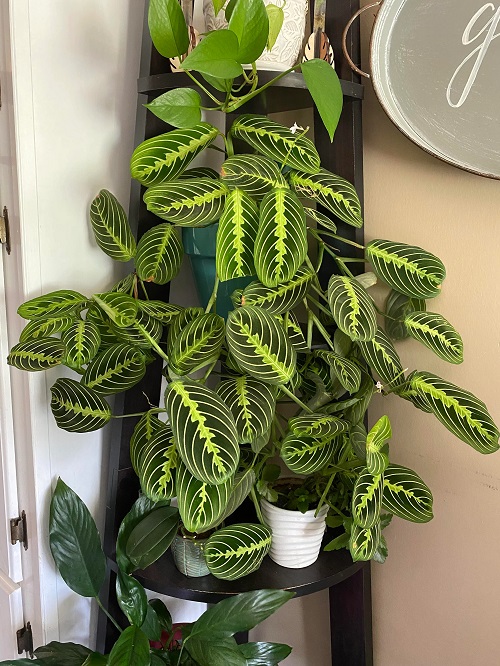
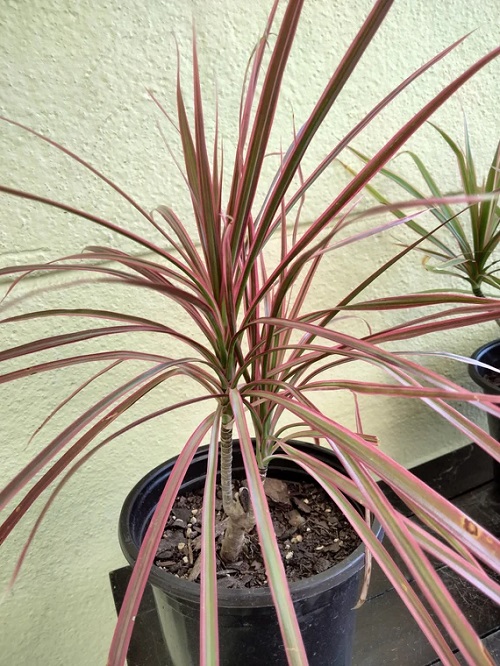
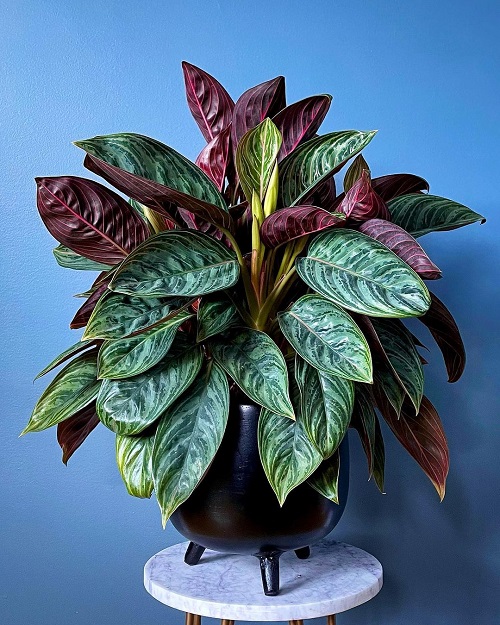




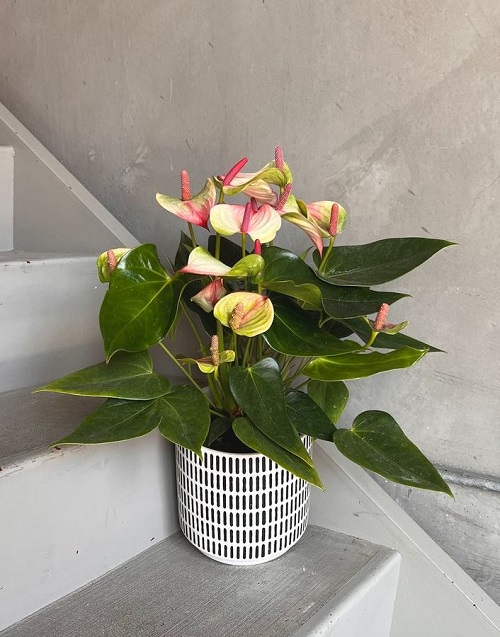







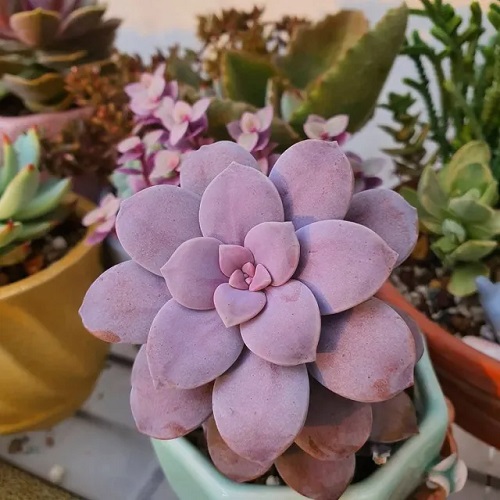

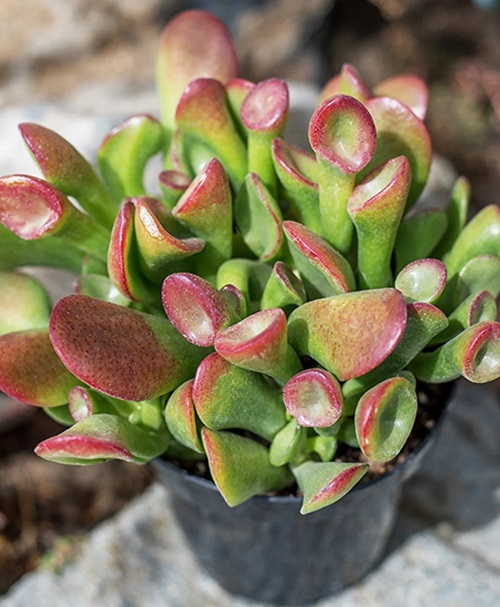


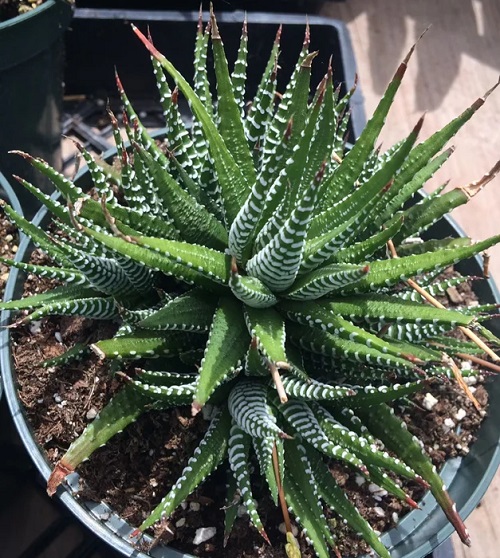

I have ombre plants in my home so that is nice information for me.